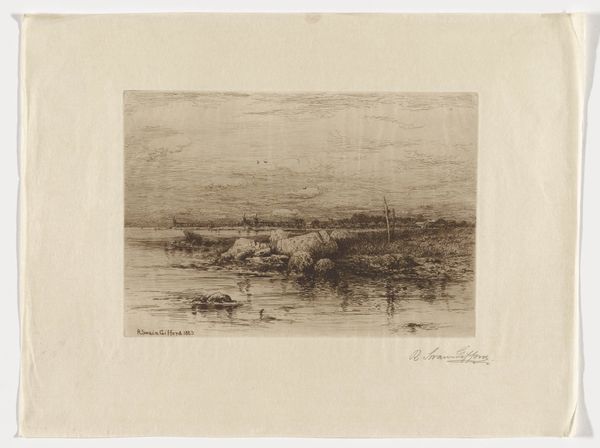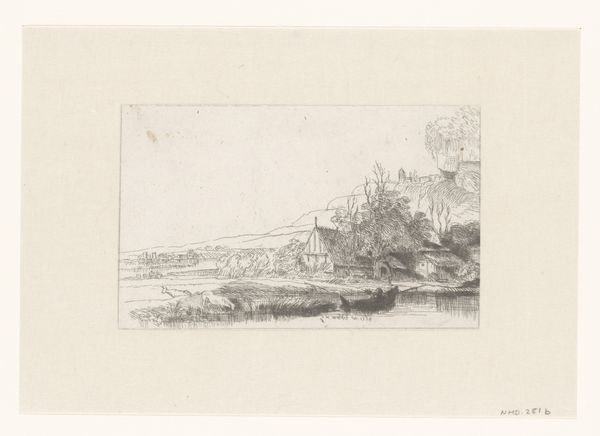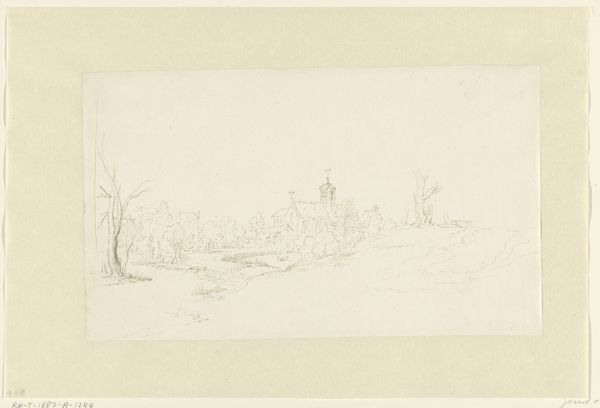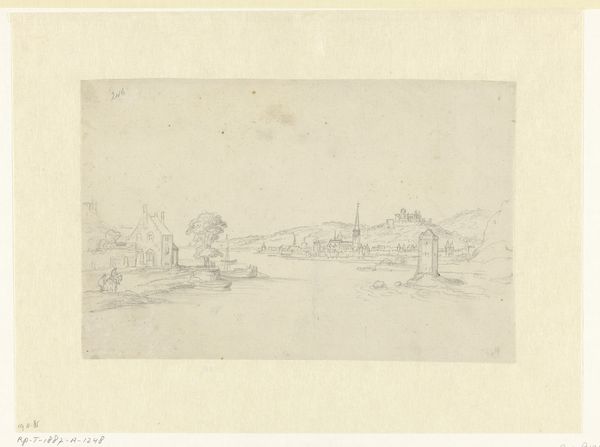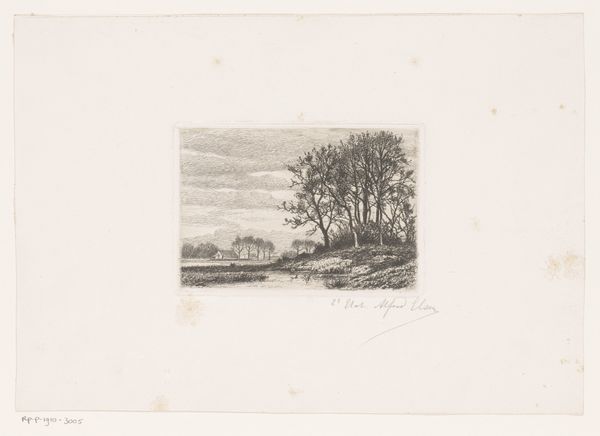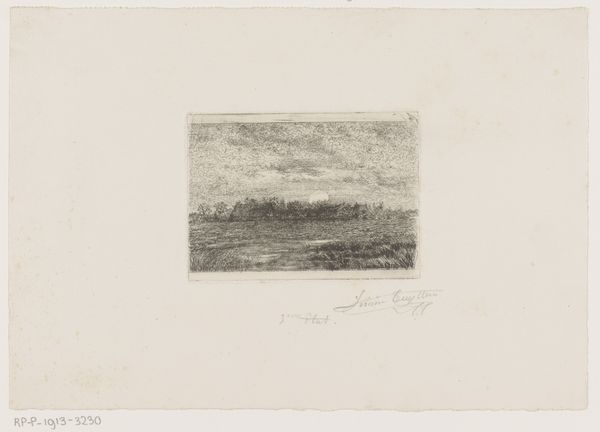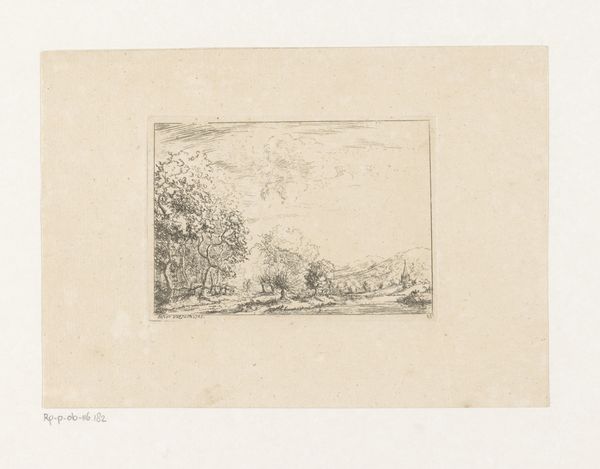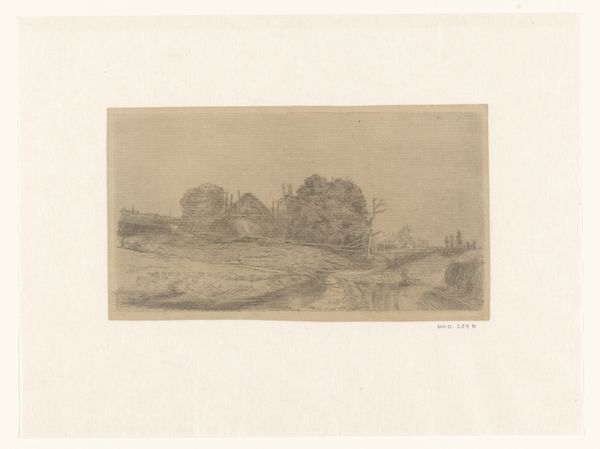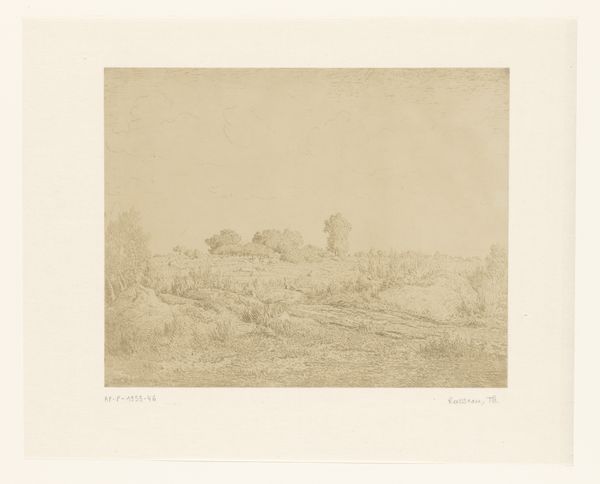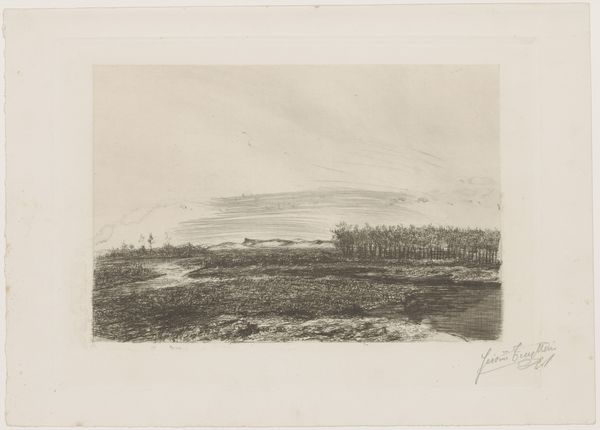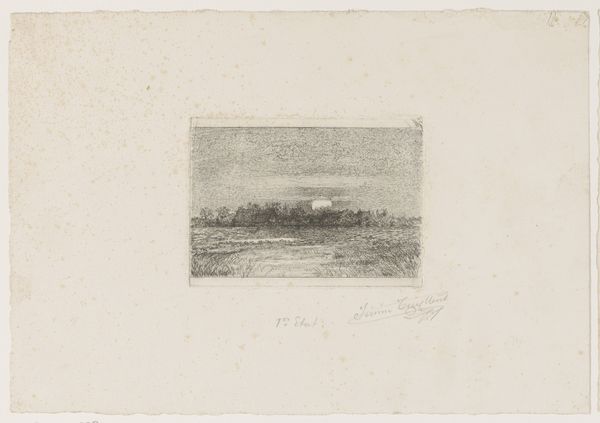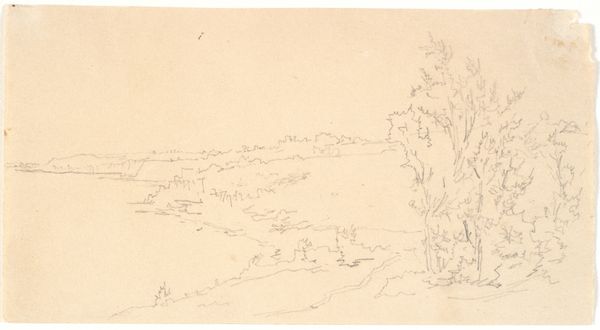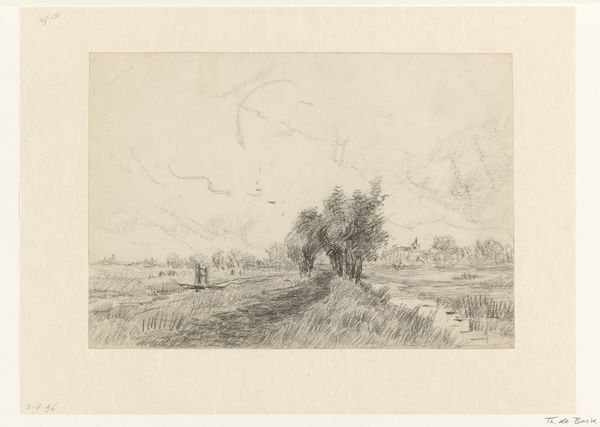
drawing, pencil
#
drawing
#
pencil sketch
#
landscape
#
etching
#
pencil
#
realism
Dimensions: height 263 mm, width 356 mm
Copyright: Rijks Museum: Open Domain
Editor: Here we have "Gezicht over het water bij Zoeterwoude," or "View over the Water near Zoeterwoude," created sometime between 1848 and 1865 by Gerard Bilders. It's a delicate pencil drawing. The quiet stillness of the water really strikes me. How do you interpret this work? Curator: The formal elements immediately stand out. Note the artist’s strategic use of line. The subtle variations in pressure create depth, don’t they? Observe the carefully modulated shading; how does it impact the atmospheric perspective? Editor: Yes, the varying line weights are interesting. So, what's the relationship between these formal elements and the overall composition? Curator: Consider how Bilders deploys horizontal lines to emphasize the flatness of the Dutch landscape. The composition reinforces this sense of expansive space while the precise rendering of textures adds visual interest. Have you noticed the light and how it transforms the scene? Editor: The light seems very diffused, soft even. I see how it models the clouds in the sky, and subtly glistens off the surface of the water, giving form to reeds and banks along the waterline. Curator: Exactly. In essence, Bilders meticulously uses line, light, and shadow to explore the intrinsic beauty of the landscape, effectively making the familiar appear fresh and captivating. The landscape becomes, itself, a formal construct. What new perspective does that give you? Editor: I guess focusing on the visual language this way, you almost forget you're looking at a landscape. You start appreciating how the artistic techniques *create* the feeling, not just depict a real place. Thanks for highlighting those elements. Curator: And thank you for considering the technical achievements alongside the aesthetic impression!
Comments
No comments
Be the first to comment and join the conversation on the ultimate creative platform.
